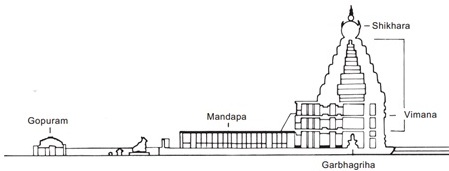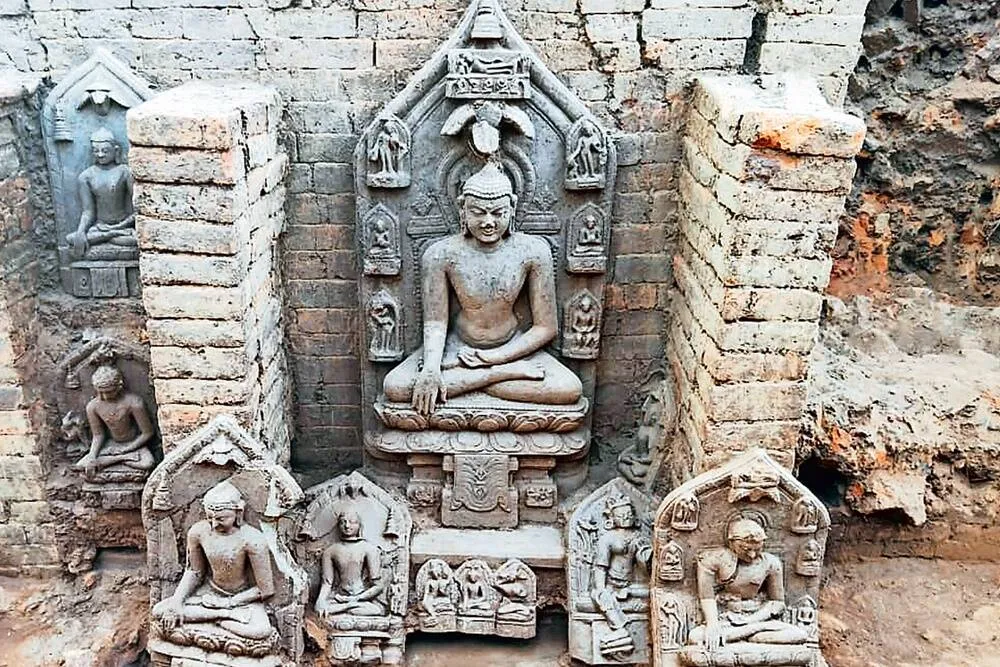Archaeological Exploration of Chola and Pallava Architecture: India is home to a rich heritage of architecture, with ancient temples, forts and monuments that reveal the glory of its cultural and historical past. Among the most prominent dynasties of South India, the Cholas and the Pallavas have left behind a legacy of extraordinary architecture that attracts archaeological exploration. The architectural marvels of these dynasties not only reflect their advanced craftsmanship but also provide a deep insight into the socio-cultural and religious life of the time.
Pallava Dynasty the birth of Dravidian Architecture:

The Pallavas, who ruled South India from the 4th to the 9th century CE, are credited with shaping the early Dravidian architectural style. One of their most notable contributions was the development of rock-cut temples and monumental structures. The Pallava Dynasty initiated a movement in South Indian architecture that would later flourish under the Cholas.
Rock-cut Temples of Mahabalipuram:
One of the most famous archaeological sites associated with the Pallavas is Mahabalipuram (also known as Mamallapuram), located on the Coromandel Coast of Tamil Nadu. The city is famous for its rock-cut temples, which later evolved into the Dravidian style of temple architecture. The Shore Temple, a UNESCO World Heritage Site, is a fine example of Pallava architecture. Built in the 8th century by King Rajasimha (Mahendravarman III), the temple is constructed from granite and is dedicated to Lord Shiva and Lord Vishnu.
Other notable structures in Mahabalipuram include the Five Chariots, a series of single temples carved from a single rock, and the Penance of Arjuna, a large bas-relief that tells the story of Arjuna’s penance to Lord Shiva. These rock-cut temples and sculptures highlight the artistic and engineering skills of the Pallavas and their ability to blend the natural environment with architectural grandeur.
Architectural Innovations of the Pallavas:
The Pallavas are also credited with the development of the shikhara (tower-like structure atop a temple) and the gopuram (ornate gateway tower). These elements would become the defining features of Dravidian temple architecture in later years. The intricate carvings, pillars and monumental gateways seen in Pallava temples laid the foundation for the architectural achievements of the Cholas.
Chola Dynasty a legacy of Monumental Temples:

The Cholas, who rose to prominence from the 9th century onwards, are considered one of the most powerful dynasties in South Indian history. They are particularly famous for their magnificent temple architecture, which combines both artistic beauty and engineering excellence. Under the Chola Empire, architecture flourished and the architectural style took on a more elaborate form, marked by towering structures, expansive courtyards, and intricate sculptures.
Brihadeeswara Temple a pinnacle of Chola Architecture:
The Brihadeeswara Temple in Thanjavur, built by Rajaraja Chola I in the 11th century, stands as a testament to the grandeur of Chola architecture. This UNESCO World Heritage Site is one of the largest and most important temples in India. It has a massive dome (vimanam) that rises 66 meters above the ground, making it the tallest of its kind. The temple is dedicated to Lord Shiva and is an example of the perfect Dravidian architectural style. The interior of the temple is decorated with intricate carvings, frescoes, and sculptures depicting various gods, mythological figures, and royal patrons.
Architectural Features of Chola Temples:
Chola temples are characterized by their massive gopurams (entrance towers), mandapams (pillared halls), and sanctuaries that house the main deity. Temples also had large courtyards, water tanks, and even spaces for rituals and processions. The Cholas introduced the concept of a monumental sanctum (sanctum sanctorum), often enclosed within massive stone walls.
Another important feature of Chola temples was the use of large blocks of stone for construction, which allowed for the creation of stable, permanent structures. Intricate sculptural work, especially in the form of stone reliefs, is seen in temples such as the Brihadeeswara and Eravateswara temples.
Significance of Archaeological Findings:
Archaeological findings of Chola and Pallava architecture provide invaluable insights into the cultural, religious, and social dynamics of early South India. Through the study of inscriptions, sculptures, and architectural remains, archaeologists have uncovered the influence of Hinduism, the role of kings in the patronage of temples, and the technological advances that enabled the construction of such magnificent structures.
The preservation of these ancient monuments not only helps in understanding the artistic heritage of India but also highlights the advanced engineering and architectural knowledge of the time. As modern-day explorers continue to uncover the secrets of these dynasties, the legacy of the Cholas and Pallavas survives, reminding us of India’s rich cultural and architectural past.
Archaeological exploration of Chola and Pallava architecture provides a unique window into the artistic, cultural and religious landscape of ancient South India. The Pallavas laid the foundation for the evolution of Dravidian architecture, while the Cholas perfected it to create monumental temples that still amaze visitors today. These architectural masterpieces serve not only as symbols of the power and influence of the dynasties but also as a lasting testament to India’s rich cultural heritage.
Read Also: Exploring India’s Agricultural Supply Chain
![]()






One thought on “Archaeological Exploration of Chola and Pallava Architecture”